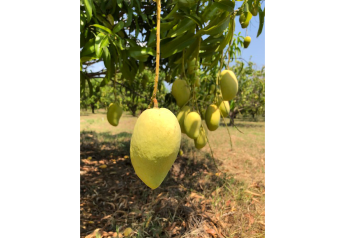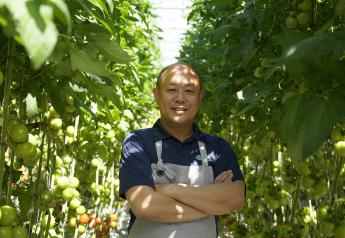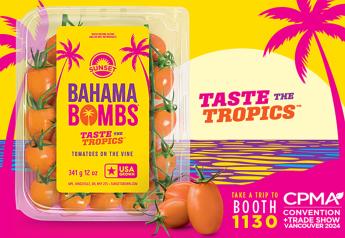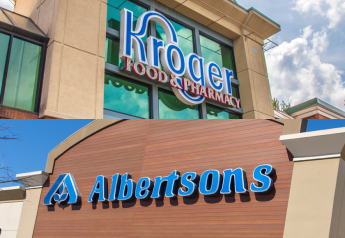Facing the changes in Florida citrus
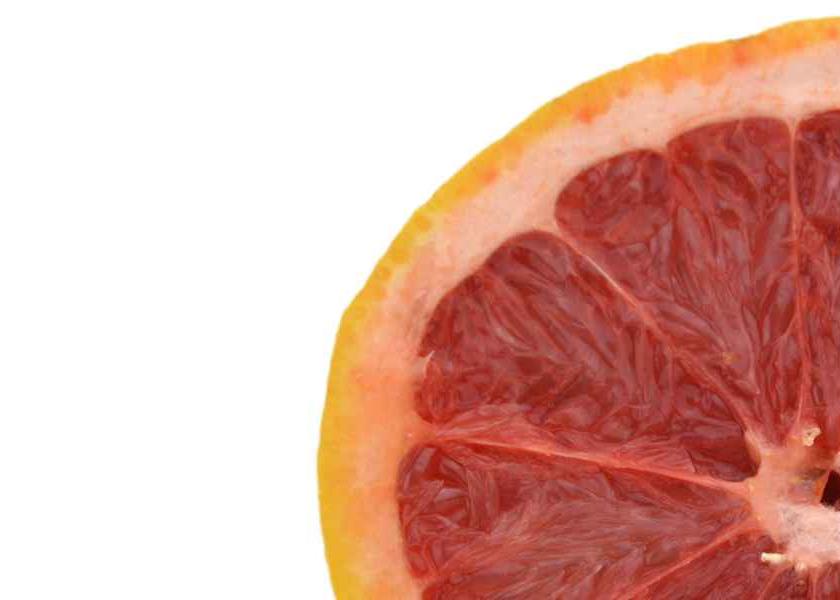
Tom Spreen, professor emeritus at the University of Florida, came to Florida in 1977 as a “green” assistant professor of economics, fresh out of Purdue.
Much has changed in 45 years.
In 2022, he is already 10 years into his retirement, though he is still engaged with citrus as a grower and industry observer.
He has observed the toll that both canker and HLB — an abbreviation for the Chinese word Huanglongbing, referring to citrus greening — have taken on the industry in the past 30 years.
Spreen said officials and the industry “shot all their bullets” trying to destroy canker, and that effort failed.
“And now, we have got, I would argue, a much bigger threat in this HLB disease, “ Spreen said. “I'm not going to start beating up on the people in charge, but they pretty well dropped the ball.”
Despite the destruction of big swaths of commercial citrus groves, Spreen said officials were never successful in getting the disease eradicated. Legal challenges and lawsuits held up the program, but natural forces caused the spread of canker throughout the state.
He said that Hurricane Charlie did much damage to eradication efforts. It was the first hurricane that hit Florida in 2005, coming down in southwest Florida and then making a diagonal shot toward the Orlando region.
“That made (canker) spread quite a bit,” Spreen said.
After that hurricane, there were two more hurricanes, both hitting the east coast of Florida.
Those two hurricanes ended up doing a crisscross across the growing regions.
“At that time, we had a little grove in Polk County, the county between Orlando and Tampa," Spreen recalled. “My partner and I had a little 20-acre grove, and it got hit three times in 2005.
“That pretty much spread canker everywhere,” he continued. “It may have already gotten itself spread pretty good, but the hurricanes made sure that everybody got canker."
After that, the citrus eradication program ended on Jan. 1, 2006.
Canker causes premature fruit drop, Spreen said. “Canker is a different disease than HLB, but it kind of affects the trees in somewhat of a similar way, in that the trees have difficulty holding their crop."
“HLB is more serious because it gets into the vascular system and it ends up clogging up the vascular system of the tree. If it doesn’t kill it, it will debilitate it to the point that something else will kill it," he said.
Canker, on the other hand, may debilitate the tree and make it more vulnerable to other diseases, but it will not necessarily kill the tree all by itself.
“In terms of seriousness, canker is a less-lethal disease than HLB, but they both have serious consequences from an economic standpoint,” Spreen said.
The attempt to eradicate canker initially probably “wasn’t such a bad idea," he said. “But politically, they just didn't lay the groundwork that you need to lay. It was really the people with backyard citrus that fought them; the commercial growers bought into the eradication, but the backyard people didn’t."
After so much energy was expended fighting canker, the fight against HLB was late to begin with.
“The canker thing was like the late 90s, early 2000s, and so HLB appears around that time,” he said. “There was never any eradication order with HLB.”
Regulatory officials had no appetite to mount another eradication effort for HLB. In addition, HLB is a different kind of disease because the psyllids can move a couple of miles before it finds the tree that it wants to feed on.
Perhaps for that reason, eradication policies didn't really make any sense from a pathology standpoint.
“But the vigor at which they went after HLB was far less than the vigor than what they went after with canker,” he said. “Some of us, economists who supposedly don’t know anything, were like, ‘Are you sure you guys are shooting at the right outlaw?’ “Because it's turned out, the bad guy was working in the background and its turned out to be far more devastating for the industry than what canker would have ever been."
Spreen said Huanglongbing literally translates from Mandarin to mean “yellow dragon."
“They came up with the term 'yellow dragon' because, when the little insect, the psyllid that spreads the disease, when the psyllid visits a tree, it feeds on a leaf on the tree,” he said.
A branch then becomes infected with the disease, and it makes the branch turn yellow.
“That's why I think greening is a misnomer," he said. "It makes the branch turn yellow, and it literally looks like there's a little yellow dragon sitting up on top of a citrus tree."
Just as with COVID-19, Spreen said there are different variants of HLB. Florida has the Chinese version of the greening disease.
Origins and future path
Nobody has any idea how HLB got to Florida in the first place, Spreen said.
“The interesting thing is that ... within a couple of years, it was found in both Florida and Brazil, which were the two big orange juice producers,” he said. “And so, now, it's basically all over Florida. Probably every grove in Florida ... has disease in it.”
However, HLB is not everywhere in the world.
“It is in Texas,” he said. “California has found it, but it does not seem to have established a foothold in California.” Mexico is believed to have it, but the advantage that the country has got going for it, (along with China and Brazil) is a wider geographic area. “Citrus in Florida is grown in a fairly compact geographic area, basically south of Interstate 4 and north of Lake Okeechobee.”
By way of contrast, citrus is grown all over southern China, a huge area where citrus can be found. In Mexico, it can be basically grown in probably every state of the country, from the U.S.-Mexico border, all the way down to the Yucatan.
In Brazil, citrus is mostly confined to San Paulo state.
“Sao Paulo is a big state; I don’t know what state it is comparable to the U.S. in size, but it can be virtually all over the Sao Paulo state. And there are three or four other states where citrus can be grown (in Brazil).”
Spreen said that, in the case of Brazil, big orange growers can literally run from HLB.
“If your area becomes highly infected with the disease, you can just go move 100 miles away, and you can either lease or buy some land,” he said. “Most of these guys are big enough, they can buy the land and plop a new grove down in an area that's not really been infected yet.
“That’s one of the reasons why their production is held up, I think, better than it has in Florida," he continued. "They've got more room to run from it. Mexico is a harder one to talk about, because we just don’t know as much about Mexico. We don’t know how many trees are in Mexico, for exhibit A."
In Florida, there is knowledge of precisely how many trees are planted.
“In Florida, we also know pretty much how much gets produced every year,” he said. “In Mexico, they don’t have a clue how much gets produced every year. In Brazil, they know kind of approximately [the production], but there is no USDA counting the fruit the way it is counted here. The statistics that you get from the major competitors are not nearly as good as what we have here.”
Spreen said it is harder to assess what's really going on in Brazil and Mexico, the two main competitors to Florida for orange juice.
“Grapefruit is kind of a different story, because grapefruit not only has to deal with HLB, it also deals with canker," he said. “The grapefruit crop this year is going to be about 4 million 85-pound boxes. In the 1990s, (production) was 45 million boxes."
Spreen added that grapefruit has been hit much harder than oranges. “Oranges are down, but it's not down 90% the way grapefruit is down."
Today, a few growers in Florida are growing citrus under screens, with a technology called CUPS, or citrus under protective screens.
Spreen said CUPS won’t necessarily keep the canker out because canker is wind-spread bacteria. In theory, it could get through the screen, but it will definitely keep the psyllid out, as well as HLB.
"It will keep the insects out,” he said.
The CUPS environment also will reduce mite damage and wind scar damage, he said.
Spreen is a 50% owner of 55 acres of Florida oranges and lemons. His former partner in the land was the CEO of Florida Natural. Spreen’s son and his son’s friend bought out his former partner a year ago last January.
Lemons are a relatively new crop to Florida.
“One of the reasons why they're trying lemons is a lemon tree is a much more vigorous tree; it grows a lot faster than an orange tree does,” Spreen said. “The feeling is that the lemon trees may grow so fast, they may literally outgrow the HLB. These trees are so vigorous and they're putting out so much new growth, that they, in fact, may be able to defend themselves against the HLB."
Spreen said his lemon grove is 3 years old, so it is not known yet whether those trees will perform well against HLB.
“My former partner, the CEO of Florida’s Natural, is the one who wanted to plant the lemon trees, so we’ll see whether or not he gave me a lemon car or gave me a good idea," Spreen said.
The other citrus block that Spreen grows is a new variety of valencia oranges that are believed to be tolerant to HLB.
“The trees are only 3 years old, so they are still relatively young, but they are showing some evidence that they seem to be holding up better against the disease,” Spreen said. “I'm hoping that our 55 acres — we are maybe one of the smallest citrus growers in the state of Florida — our hope is that we've got a plan that has got some legs to it.”
Spreen is intrigued about the CUPS technology, but the screens come with a hefty price tag.
“The trouble is, it’s about a million dollars a pod to do it, and so, just being a retired professor, I don't have a million dollars laying around," he said.
Beyond waiting some years for production to hit maximum capacity, Spreen said other concerns about the CUPS method are the hurricane and freeze risks, though proponents of the CUPS method say they are strongly built to withstand both freezing and hurricane-force winds.
Still, Spreen remains not entirely convinced.
“You can ensure the structure, but it's not clear that, once that windscreen comes off, if the psyllid [is] going to come in and infect your trees while it is open,” he said. “And we haven’t had a hurricane event since these pods have really gotten popular in the last couple of three years."
Remaining growers
The survivors in the Florida citrus industry are a mixed lot, Spreen said. “The one thing about these diseases, they don't seem to care if you're a big guy or you're a little guy.”
All growers have been “worked on” pretty hard by canker and greening, Spreen said, from those with thousands of acres to those with just 200.
One smaller grower Spreen visited recently has a 200-acre grove in the middle of south-central Florida, in the Lake Placid area of Highlands County, one of the premier citrus-growing regions in the state, with deep, sandy soil.
“It was like the place to grow Florida citrus,” he said. Now, the grower told Spreen, the grove was in poor shape.
GMO or no
Spreen said growers would not likely hesitate to use a genetically modified citrus variety to beat HLB or canker.
“The U.S. consumer has been perfectly willing to buy GMO products," Spreen said. "Florida’s market is the U.S. and Canada."
As to the future of citrus in Florida, Spreen said tree numbers in Florida have declined. They haven’t dropped as much as the crop size because yields have also gone down, he noted.
“The crop was contracted because of a combination of lower yields and fewer trees,” he said.
Spreen said there are some new plantings, however. “In fact, the big news here is that, within the last couple of months, they seem to have mysteriously found a tree that’s an early maturing variety of orange that seems to be resistant to HLB," he said. “I think they are trying to establish if it can be replicated on a commercial basis."
But even if the tree is an answer, Spreen said it will be at least five years before the new variety could make a difference.
And, while breeding for new varieties is needed, Spreen maintains that it's not the only answer.
“I’m not saying that the breeding is misguided, because it's not,” he said. “But it was never going to be the magic bullet that people seem to think of was, because there was always going to be a time lag, between the time you discover it, prove that [it's] not susceptible to [diseases]. To get ... seedlings grown takes a year, year and a half. [Then, you have to] grow the seedlings, get them in the ground and away you go.”
Spreen said Florida citrus acreage could easily double if new disease-resistant varieties are discovered.
Time is of the essence.
With grapefruit about 90% down from its peak production, there is not nearly the volume of fruit moving through the fresh packinghouses that once was the case.
“There are a few packinghouses in the interior part of Florida, but if they are doing a million cartons a piece, I would be surprised," Spreen said. There are no fresh packinghouses in the southwest part of the state, and the number of fresh sheds has dwindled overall.
“Once, there were probably 30 packinghouses on the east coast of Florida, and, now, it’s like you can count them on one hand, because there is not the fruit to support them anymore,” he said.


